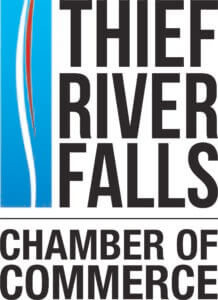There’s a fine line between a well-run operation and a chaotic mess of paperwork, and small business owners walk it daily. Whether it’s receipts stuffed into drawers or contracts scattered across cloud services, documents are easy to misplace and even easier to forget. What often begins as a system built on good intentions can morph into a disorganized beast that devours time and energy. For small businesses trying to stay nimble, clarity in documentation isn’t just convenient — it’s critical to survival.
Resist the Pile-Up: Triage in Real Time
The first rule of document discipline? Don’t let things sit. Business owners who put off organizing receipts, invoices, and contracts often wind up wasting more time hunting for files later. Make it a practice to sort documents as they come in — categorize, label, and file them immediately whether digital or paper. Like doing the dishes after dinner, it's a simple habit that saves headaches down the road.
Keep It Where You Can See It: One Home, Not Many
Spreading files across email threads, USB drives, and multiple cloud apps creates a digital scavenger hunt. Choose a single platform for storing all business documents, and stick with it. Whether that’s Google Drive, Dropbox, or a secure internal server, consistency beats variety every time. A central location eliminates confusion and makes access seamless when it matters most — like during tax season or a surprise audit.
Protect Before You Send: Redact with Intention
Before sharing any business document beyond your walls — especially those that contain client data, pricing structures, or internal HR details — take time to scrub it clean. Sensitive content that isn’t meant for external eyes can easily slip through the cracks unless you use a redaction tool designed to permanently erase it. Tools built for secure editing ensure that nothing hidden can be later uncovered, which often happens with simple strikethroughs or blurring. Learning how to redact a PDF correctly helps protect privacy while keeping your documents professional and polished.
Don’t Trust Memory: Create a Naming Ritual
Filing a document is only half the battle; retrieving it quickly is the real test. Random file names like “final_version_updated3.pdf” are an invitation to future frustration. Develop a naming system that reflects the document type, client or vendor, and date — and apply it universally. Standardizing file names isn’t glamorous, but it turns your digital archive into a searchable, stress-free goldmine.
When Paper Persists: Marry the Physical to the Digital
Despite the march toward paperless, some documents refuse to die — contracts with wet signatures, receipts from local vendors, hand-written notes. Instead of fighting paper, create a system that captures it. Invest in a reliable scanner and scan physical documents immediately, storing them in your digital system under the same naming rules. That way, even if the dog eats the original, the backup’s always a few clicks away.
Access Isn’t Just for You: Think Teamwide Transparency
Small business doesn’t mean solo. Whether it’s two employees or twenty, team members need access to documents without having to play phone tag. Set user permissions within your chosen platform to give the right people the right level of access. Clear folder structures and shared drives allow everyone to find what they need without the bottleneck of waiting on someone else to forward a file.
Routine Beats Rescue: Set a Cleanup Cadence
Digital clutter creeps in quietly — old drafts, duplicates, irrelevant downloads. If left unchecked, it turns organized systems into digital junkyards. Schedule regular cleanups to archive old documents, delete what’s no longer needed, and ensure naming conventions are still being followed. Just like tidying a closet, a 15-minute monthly sweep can keep your document system sharp and lean.
Don’t Roll the Dice: Backups Aren’t Optional
Data loss isn’t a matter of if, it’s a matter of when. Relying solely on one storage solution, even cloud-based, leaves your business vulnerable to outages, breaches, or human error. Automatic backups — preferably in multiple formats and locations — should be part of your operating rhythm. Backups are the unsung insurance policy that keep businesses running when tech turns temperamental.
Document management isn’t just a chore; it’s a quiet infrastructure supporting every invoice sent, deal closed, and hire made. When small business owners create systems that prioritize order, they build a foundation that scales. Instead of losing hours digging through folders or reconstructing missing forms, they stay focused on what really matters: serving clients, growing their brand, and making smart decisions. A tidy back office, after all, is often the clearest sign of a business that’s built to last.
Discover the benefits of joining the Thief River Falls Chamber of Commerce and connect with local business professionals to help grow your business and community today!

